Genesis started with 4 artsy, well-heeled students (I’ll ignore drummers for now), all of whom thought of themselves as writers, not performers. I don’t think that’s the best way to label them. Tony Banks was The Writer, but I’d call Peter Gabriel The Artist (with a capital “A”) and Anthony Phillips The (Musical) Talent. And Mike Rutherford was there too.
After their attempt at pop failed, they picked up on the trend for more complex rock with shades of classical and folk that was sweeping over England and they got it right in one, becoming a foundational band of progressive rock. Problematically, they then lost The Talent, but lucked out in replacing him with an even great Talent, Steve Hackett. They’d also gone through multiple drummers, and now stabilized on a skilled one with Phil Collins, who brought with him a touch of jazz. He could also sing, doing a reasonable impersonation of Gabriel… Gee, I wonder if that will be important later.
This five-piece version of the band was nearing on perfect: Art, Talent, Writing, and Skill all at their peak. Plus Rutherford. And they created some of the greatest rock albums of all time.
Of course it couldn’t last. It never does. Friction between members, particularly Banks and Rutherford being dicks to Gabriel and Gabriel going all in on being THE Artist, caused Gabriel to go solo. The loss of The Artist hurt, but his spirit was still there, and they all envisioned themselves to be artists. They had The Writer, who could still pen smart, complicated works for The Talent and the skilled drummer. Oh, and Rutherford was there too. After numerous auditions, Collins reluctantly took over as front-man (his idea had been to become a purely instrumental band), and he wasn’t bad.
But after two albums, friction hit again, this time with Banks and Rutherford being dicks to Hackett while Hackett just wanted to do something. It’s weird to think that Collins was the one that got along with everyone.
Now, any sane group who found themselves losing their Talent—who was also the guitarist—would find another talented guitarist. But they didn’t. Instead, Rutherford, a mid-tier bassist, took on the role of guitarist, following a master, while still playing bass. To say he wasn’t up to the task is being polite. And Banks now had to write to the level of talent left in the group. At least Collins was a good drummer, except he didn’t drum when he sang, and he was starting to get interested in drum machines because, sure, why not strip away one area where the band could still excel. They managed two albums before the loss of talent and the possibility of big money with simple pop tunes pulled them to the dark side.
So, time to rank the albums of Genesis. It’s not too tricky. After a bump, Genesis’s output can be divided into 4 eras: Classic/Prog, Transition 1, Transition 2, and Pop. And each era is less than the one that came before. So, starting with #15
#15 Calling All Stations
Ug. This is a terrible album, dull, lifeless, and dim. I can’t find anyone who thinks this was a good idea. Collins had finally quit due to a combination of his successful solo career and fading health, and Banks and Rutherford wanted some of that sweet, sweet Genesis money. But, being dicks, they wouldn’t let their stage musicians, who’d been playing with them for years, in as official members. But they knew they needed a singer. Ray Wilson’s voice doesn’t fit what they are doing (David Longdon, later of Big Big Train, auditioned and would have been a much better fit), but he isn’t the problem. It’s the songs. The hooks are missing for pop music, and the complexity is missing for anything more. And while Genesis lyrics have been weak since the ’70s, these are atrocious. There’s nothing good here
Least Bad: The Dividing Line
Worst: Congo, Shipwrecked, Not About Us
#14 We Can’t Dance
With the ’90s, Genesis tried to once again do something of value. They didn’t try very hard, but there are more long tracks, and a few with what counts as complexity for late Genesis. But the band can’t do it. Driving the Last Spike and Fading Lights are attempts at the epics they’d managed 15 years earlier, but the skill is lacking. If you can’t do it, it’s probably better not to try. And there’s still the lame ’80s-ish ballads and synth disasters. The longer runtime just gave them more chances to fail.
Least Bad: Jesus He Knows Me
Worst: I Can’t Dance, Never A Time, Tell Me Why, Hold On My Heart, Since I Lost You
#13 Invisible Touch
’80s Genesis has a very ’80s sound, and that’s not a good thing. With The Artist and Talent of the group long gone by ’86, the remainders are smartly not even trying to do anything worthwhile. This is lowest common denominator pop, and it hardly works as that. And let’s not dwell on the lyrics. Domino had potential to be something more, but those ’80s synths and drum machines kill it.
Least Bad: Invisible Touch, Tonight, Tonight, Tonight
Worst: In Too Deep, Anything She Does
#12 From Genesis to Revolation
The first album, written when the members were still teenagers and planning on being writers of pop tunes. Their producer was even keener on pop, wanting them to sound like The Beach Boys. Once you get past the intrusive strings (if you can; I can’t), you end up with an OK psychedelic pop album. There’s potential, although it isn’t clear potential for what. In the Beginning and The Serpent remind me of The Animals, in a good way. In The Wilderness has a few suggestions of what was to come. But nothing is memorable.
Best: In the Beginning, The Serpent, The Conqueror
Worst: Fireside Song, In Hiding, Window
#11 ABACAB
With ABACAB, Genesis tossed off the last pretense that they were a great band and embraced mediocrity and money. Gotta love the laziness of the title track, where they didn’t even bother finding lyrics, but just sing the structure of the song, but not even the final structure. Well, as pure pop, it could be worse; it would be worse. I am thrown that they cut the best song from this recording session, Paperlate. If for some reason you want 80’s cheese, this isn’t a bad place to go for it.
Best: Keep It Dark, Man On The Corner
Worst: Who Dunnit?, Like it Or Not, Another Record
#10 Genesis
Why do bands self-title albums in the middle of their career? Oh well. This is the height of pop-Genesis, mainly because they stray a bit. It’s all pretty simple, with repetitive drum machine bangs, lackluster keyboards, and barely-there guitars. But it has its moments, and those moments are almost entirely in the two Home By the Seas. The album also never sinks to the lows of other pop-era Genesis, so it wins on both ends.
Best: Home By the Sea/Second Home By the Sea
Worst: Illegal Alien, Just a Job To Do
#9 Duke
The last album (chronologically) I call good, and the end of their second transitional period. The old Genesis was being buried, but there was still some life left. I always found Duke to have a touch of jazz, which gives it character. I’d have been OK with the new band staying like this. The loss of Hackett is felt strongly, but Collins does a particularly nice job on the drums and Banks still has a few tunes in him.
The Best: Behind the Lines, Duke’s Travels/End
The Worst: Alone Tonight, Please Don’t Ask
#8 And Then There Were Three
The first record of the second transitional era, The Talent had left, leaving a huge hole. The trio was having a hard time figuring out what it was now. There’s lots of prog here, though not much I’d call art rock. It’s so much simpler than what came before, but still complex for a rock album. It’s hard to say what this album is, except that it holds together surprisingly well. They found their answer in the final song: Follow You Follow Me is terrible prog rock, but it’s great pop.
The Best Burning Rope, Follow You Follow Me
The Worst: Say It’s Alright Joe
#7 The Lamb Lies Down on Broadway
This is where I’ll get in trouble with most old-school Genesis fans. When I got into Genesis in the later ’70s, it was a biblical truth that this was the pinnacle of the band, but it’s never clicked for me. Oh, there’s greatness here, but there’s also problems, and it’s easy to see the band splitting apart in the music. I love Gabriel, but this was too much Gabriel for a band. He got lost in the story (that he insisted only he could write) and it isn’t much of a story. The rest of the band was pissed, and it feels like it. There isn’t enough interesting music or compelling melodies for a double album, but Gabriel had more lyrics he wanted shoved in somewhere. Yes, this is a good album, but not the Holy Grail it was made out to be, and it rarely tops rankings any more.
The Best: Most of the 1st disk
The Worst: Most of the 2nd disk
#6 A Trick of the Tail
So Gabriel had left, apparently to the relief of both the remaining members and Gabriel. The loss of The Artist hurt, but The Writer had ideas and had The Talent and a skilled drummer to pull them off. And Rutherford was there too. Collins took over singing, and while he wasn’t the best singer around, neither was Gabriel, and there was enough similarity that the band didn’t have to adjust too much. They set out to prove the band could still work without Gabriel, and they pretty much did. The album lacks the absolute classic songs of earlier albums, but it has no significant weaknesses. This is a reasonable entrance album into Genesis for non-prog folks.
Best: Dance on A Volcano, Los Endos
Least Best: Entangled, Robbery Assault And Battery
#5 Wind & Wuthering
I’ve always found it odd that the 4-man band improved on their second time out. This is a great album, keeping the overall solid level of A Trick of the Tail, but adding in a few top notch songs. It’s generally described as “autumnal.”
Best: Eleventh Earl of Mar, Unquiet Slumbers For the Sleepers/In that Quiet Earth/Afterglow
Least Best: Your Own Special Way
#4 Trespass
Their second album, this is when Genesis became Genesis. There’s multiple epics with a good deal of theatrics. It has a slightly darker tone than other Genesis albums. Trespass gets far less attention than it deserves—I suspect because it predates Collins and Hackett, so it doesn’t technically have the “Classic Lineup,” though I group it in the Classic Era. It’s a fantastic album, nearly equal to the next two on this list.
The Best: The Knife, Stagnation
Least Best: Dusk
#3 Nursery Cryme
Oddly, a lot of critics claim there was a fundamental change between Trespass and Nursery Cryme, but I disagree. What changed was the personnel. This is Trespass, with a better guitarist and a better drummer. Considering the crap Collins would do later, it’s sometimes easy to gloss over that he was a damn fine drummer. The melodies are a touch stronger and the whole thing is a slight bit crazier.
Best: The Musical Box, The Fountain of Salmacis
Least Best: Seven Stones, Harlequin
#2 Selling England By the Pound
I guess I’m not going out on a limb with my final rankings as this more often than not ends up in one of the top two slots of any Genesis ranking. And for good reason. It very much fits with Trespass and Nursery Cryme, but now not only better, but perfected.
Best: Dancing With the Moonlight Knight, Firth of Fifth, The Cinema Show
Least Best: More Fool Me
#1 Foxtrot
The record company owner heard this and said, “this is the one that makes their career.” Who knew execs had taste? Everything was working for the band. Hell, they even were getting along. It’s the best Genesis album with the best Genesis song. Supper’s Ready is the best thing Genesis ever did, and very few bands have done anything near this level. So with it taking up half the album, Foxtrot is going to be on top. It helps that the other side is good too, on par with the previous (and next) albums, but it’s Supper’s Ready that grabs the ring.
Best: Supper’s Ready, Can-Utility and the Coastliners
Lest Best: none
 It’s time for another list that no one cares about. With films and gaming, I’ve got cred. Music… Well, this is just what I like. And what I like is Yes.
It’s time for another list that no one cares about. With films and gaming, I’ve got cred. Music… Well, this is just what I like. And what I like is Yes.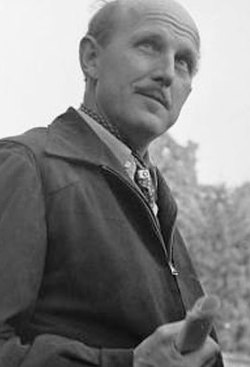 My bio for Michael Powell is a bit longer then usual as people who don’t breath cinema don’t seem to know him.
My bio for Michael Powell is a bit longer then usual as people who don’t breath cinema don’t seem to know him.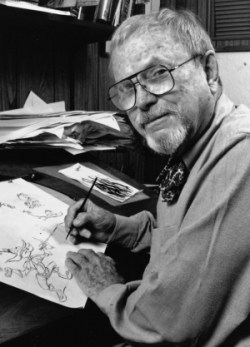 This is different from my normal Director’s Lists as Jones is not known for features, but for animated shorts. But then he’s also the greatest director of shorts, and arguably of animations of any length, so definitely a man who needs to be included.
This is different from my normal Director’s Lists as Jones is not known for features, but for animated shorts. But then he’s also the greatest director of shorts, and arguably of animations of any length, so definitely a man who needs to be included.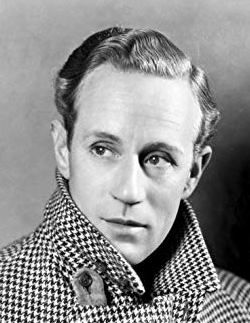 Howard was a major star of early film, and a gifted actor, playing romantics, egotists, detectives, scholars, and even a swashbuckler, but he is primarily remembered for his gruesome role as the effete Ashley in Gone With the Wind. His legacy deserves better. Hollywood never quite figured out what to do with him. He was handsome, with a fine clear British accent, but he didn’t fit into the newly developing molds.
Howard was a major star of early film, and a gifted actor, playing romantics, egotists, detectives, scholars, and even a swashbuckler, but he is primarily remembered for his gruesome role as the effete Ashley in Gone With the Wind. His legacy deserves better. Hollywood never quite figured out what to do with him. He was handsome, with a fine clear British accent, but he didn’t fit into the newly developing molds. Unusual both on and off screen, Elsa Lanchester was a skilled and artistic actress, and Hollywood never figured out what to do with her. She could have made a great leading lady, with her unconventional beauty and dancer’s body, but was only given leading parts twice (both mentioned below). Most often she was relegated to support status, often in quite small parts as maids and housekeepers, where her quirkiness was an asset. But this suited her as she was more interested in live performances, particularly of the music hall variety.
Unusual both on and off screen, Elsa Lanchester was a skilled and artistic actress, and Hollywood never figured out what to do with her. She could have made a great leading lady, with her unconventional beauty and dancer’s body, but was only given leading parts twice (both mentioned below). Most often she was relegated to support status, often in quite small parts as maids and housekeepers, where her quirkiness was an asset. But this suited her as she was more interested in live performances, particularly of the music hall variety.









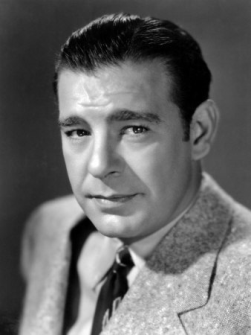 The third of the Big Three icons of classic horror (
The third of the Big Three icons of classic horror (
































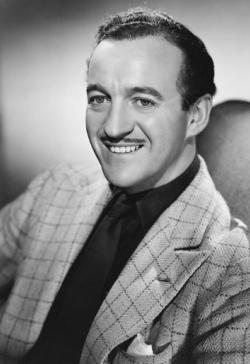 David Niven looked and sounded like the ultimate English gentleman. And he may have been. He was one of the wild young Hollywood boys, along with Errol Flynn, who partied, drank, bedded lots of women, and fought. He was in the military twice, first after college and again when Britain went to war in WWII. Of the second stint he is known to have been part of a behind the lines unit that saw a great deal of action, along with spending time making propaganda films. His rebellious side did not counter his charm, and unlike many of his colleagues, he was known to be easy to work with, professional, and friendly on set.
David Niven looked and sounded like the ultimate English gentleman. And he may have been. He was one of the wild young Hollywood boys, along with Errol Flynn, who partied, drank, bedded lots of women, and fought. He was in the military twice, first after college and again when Britain went to war in WWII. Of the second stint he is known to have been part of a behind the lines unit that saw a great deal of action, along with spending time making propaganda films. His rebellious side did not counter his charm, and unlike many of his colleagues, he was known to be easy to work with, professional, and friendly on set.